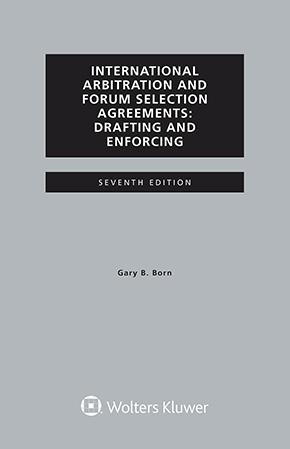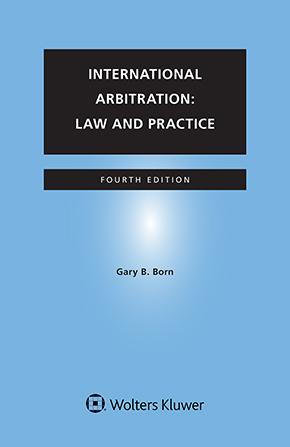Hardy Forgotten, Doctrines Entangled: Disortho v. Meril Life and the Seat-Venue Conundrum
September 15, 2025
The factual matrix of the recently issued Supreme Court of India (“SCI”) judgment in Disortho appears deceptively simple. One party to a Distributor Agreement (“Agreement”) sought to apply the Indian Arbitration & Conciliation Act, 1996 (“Indian Arbitration Act”) despite Clause 18 of the Agreement specifying the seat of the arbitration as Bogotá under the Center for Arbitration and Conciliation of the Chamber of Commerce of Bogotá (“CAC-CCB”) International Commercial Arbitration Rules (“CAC-CCB Arbitration Rules”) with the applicability of Colombian law. At the same time, Clause 16.5 of the Agreement explicitly stated that Indian law governed the entire Agreement and the Indian courts retained exclusive jurisdiction over disputes.
The SCI held that while Bogotá was designated as the arbitration venue, since Indian law (lex contractus) governed the arbitration agreement (“AA”), the Indian Arbitration Act would be applicable. Accordingly, Indian courts had jurisdiction to appoint the arbitrators. This ruling obfuscates multiple issues, most notably, on the seat-venue debate, curial law, and lex arbitri.
Previous posts on this blog have discussed the issues surrounding the seat-venue debate and the law of AA/curial law. This post continues this discussion by arguing that Disortho was wrongly decided, necessitating intervention by the Indian Constitutional Bench.
It’s a Hard(y) Knock Life: Reconciling Precedents in Disortho
A. Hardy? Never Heard of Her: Disortho’s Judicial Amnesia
In the previous case of Hardy, while dealing with the seat-venue debate, the SCI held that “a venue can become a seat if something else is added to it as a concomitant.” A year later, however, in BGS SGS SOMA, the SCI held that Hardy “cannot be considered good law” for failing to apply the Shashoua principle, which essentially states that the venue must be presumed to be the seat. Consequently, BGS reversed the standard, stating that if there is no contraindication, the venue could be presumed the seat.
As both BGS and Hardy are SCI judgments of equal strength, BGS cannot overrule Hardy. The inconsistent approach in both cases came up again in the SCI case of Mankatsu, where the SCI refrained from addressing the correctness of BGS. In holding that intention has to be ascertained from the conduct and other clauses in the agreement, the SCI essentially reaffirmed the approach adopted in Hardy and BGS and applied them in two steps: first, by treating the designation of a seat or the use of certain clauses as positive indicators of the seat; and second, by confirming that there was no contrary indication in the agreement, as was also the case in Mankastu.
However, perhaps due to doctrinal tension and bench strength, the SCI in Mankatsu hesitated to apply Hardy directly. Interestingly, a later SCI decision in Ravi Ranjan Developers seemed to read Hardy and Mankatsu together.
Up to this point, all jurisprudence on the seat-venue debate had, at least doctrinally, acknowledged Hardy and engaged with it. Even Mankatsu, while evading the question of BGS versus Hardy, still explicitly mentioned both cases. But another SCI decision in Arif Azim completely ignored Hardy. Instead, it relied on BGS and read Mankatsu as an application of BGS.
This came to the fore in Disortho, where Arif Azim was heavily referenced as having examined the relevant jurisprudence, yet Hardy was not considered. Given the equal footing of the SCI’s judgments in these cases, the SCI in Disortho should not have simply ignored these cases; it could have acknowledged the entire line of cases and attempted to reconcile them.
B. Making Peace with Hardy: Why Disortho Didn’t Need to Panic
A solution to this knotty jurisprudence stems from the High Court of Punjab & Haryana (“P&H HC”) decision in Biren Sahni. To contextualise this discussion, Biren Sahni was delivered in 2024, before SCI’s evasive modus operandi in Arif Azim and Disortho. The position of law can be summarised in the table below:
Case | Presumption Rule | Indicia Considered |
Hardy Exploration | Venue ≠ Seat unless positive indicia show otherwise | Clauses in contract |
BGS SGS SOMA JV | Venue = Seat unless contrary indicia | Clauses; supranational rules |
Mankastu | Intention from conduct + clauses | Clauses and conduct |
Arif Azim | Adopted BGS SOMA presumption | Clauses only (no conduct) |
Disortho | Relied on Arif Azim and BGS SOMA | Contractual clauses |
Ravi Ranjan Developers | Applied Hardy; acknowledged conduct as indicia | Clauses and conduct |
In Biren Sahni, the P&H HC highlighted the conflict between Hardy and BGS, noting that neither case established an absolute principle as both were based on “indicia suggestive of any intention or manner,” i.e., both were different applications of the broader standard of looking at any indica.
Biren Sahni is the preferred approach for three reasons. First, it broadens the issue from positive/negative indica to any indica that shows party intent, prioritising party autonomy. Second, it avoids unnecessary presumption battles, which can obscure the party’s intent. Third, it provides a balance between certainty and flexibility. On finding a clear intention, courts may reach a finding without being restricted by burden of proof standards or rigid heuristics. However, to resolve the conflict, a Constitutional Bench must be formed on Disortho, considering Hardy and BGS are SCI judgments, while Biren Sahni is only a lower High Court decision that cannot override SCI decisions.
If Hardy and BGS are applied to the facts of Disortho, a different conclusion could have been reached. Under Hardy’s positive indicia approach, clear signs were pointing to Bogotá as the seat of arbitration, including the express designation of Bogotá as the seat of the arbitration and the adoption of CAC-CCB Arbitration Rules by the Bogotá Chamber of Commerce. While Clause 16.5 of the Agreement specified Indian law and granted exclusive jurisdiction to the Gujarat courts, the separability principle implies that it pertained solely to contractual issues arising from the underlying Agreement, rather than the arbitration clause. On this approach, the SCI could have confined Clause 16.5 to non-arbitration litigation action and consider the CAC-CCB administration coupled with Bogotá as the place of arbitration to be positive arbitral indicia, resulting in Bogotá as the seat.
Similarly, under the BGS standard, the initial presumption would also treat Bogotá as the seat based on the place of arbitration and adoption of CAC-CCB Arbitration Rules, in the absence of contrary indicia and the Gujarat jurisdiction clause could be confined to contractual issues. However, Disortho treats Clause 16.5 as contrary indicium. A stricter Shashoua-style reading could have indicated otherwise. The tribunal seated for the Bogotá arbitration decides the merits (applying the contract’s chosen substantive law); Indian courts have supervisory jurisdiction under the Indian Arbitration Act.
Thus, although the two approaches start from different presumptions, they would ultimately lead to the same outcome: Bogotá as the seat, not merely the venue.
How Disortho Confused Lex Arbitri and Curial Law
There is often confusion on whether lex arbitri refers to the curial law or the law of AA. Unfortunately, Disortho blurred this distinction further. While the curial law governs the courts’ supervisory role, the law of AA determines the validity and enforceability of the AA. The SCI incorrectly asserted that these two should not be differentiated by default unless the parties provide otherwise.
The SCI held that Indian law was the curial law, and while the rules of Bogotá would still apply, only Indian courts had jurisdiction over the arbitration. It reasoned that, because Clause 18 did not specify the seat, the curial law would equate to the law of AA. The SCI, thus, created an erroneous distinction between the law of the seat and the lex fori (procedural rules of Bogotá), and disregarded the explicit stipulation of Colombian law in Clause 18 of the Agreement.
However, even when the seat has not been specified, Indian courts have determined the curial law solely based on the lex fori. In Yograj, where the lex fori was the Singapore International Arbitration Centre (“SIAC”) Rules and Singapore as the "place" of arbitration, without any stipulation of the curial law, the SCI held the SIAC Rules to be the curial law as well. Although the curial law in Yograj should have been decided as Singapore, instead of the SIAC Rules, Indian courts have consistently held that if the lex fori is consistent with the "place" of arbitration, that place is indeed the seat. Given that the "place" of arbitration aligned with the lex fori in Disortho, there was no logical reason for the SCI to decide India as the seat.
Furthermore, when the curial law is explicitly specified as Colombian law, as in Disortho, it is unnecessary to go to the second stage of deciding the seat. The rule of deciding the curial law based on the express stipulation of the seat also applies in reverse; if the curial law is indicated, Indian courts have held the jurisdiction of the curial law to be the seat as well. In the case of IMAX, the SCI considered the ICC Rules of Arbitration to be a significant factor in interpreting the parties’ intention to agree on a seat outside India. Disortho did not even consider this line of reasoning.
By conflating curial law and the law of AA within lex arbitri, the SCI ended up applying principles relevant only to curial law (from cases where lex arbitri was interpreted to mean curial law) and those applicable only to the law of AA (from cases where lex arbitri was interpreted to mean the law of AA) to both. This leads to the erroneous impression that supervisory jurisdiction can be anchored in either law.
In the cited case of Paul Smith, the U.K. High Court held that the lex arbitri determines the courts’ supervisory jurisdiction in the context of curial law. Thus, supervisory jurisdiction depends solely on the curial law, not on the law of AA, in line with established principles. In contrast, following Disortho, supervisory jurisdiction can now be established even by the law of AA. This grants the court jurisdiction when it should not have.
Disortho presented unique facts where the foreign party sought arbitration in India, while the Indian party opposed it. Typically, it is the foreign party that resists arbitration in India or challenges enforcement, not the other way around. Without this nuance, the SCI would likely have designated Bogotá as the seat.
In addition, in ruling that the lex arbitri was not divided, the SCI misapplied the Sulamérica test, a three-stage test to determine the law of AA. Under this test, courts first look for an express choice of the law of AA. If absent, the second step is to search for an implied choice. If neither is clear, the third stage involves an enquiry into the system of law with the closest and most real connection to the AA. In Disortho, the SCI reasoned that the parties’ selection of Indian law as the lex contractus sufficiently indicated their implied choice for both the curial law and the law of AA, and found it unnecessary to go to the third stage.
However, numerous cases suggest that at the second stage, it is not the lex contractus but the curial law that is considered as the implied choice. In Naviera, the U.K. Court of Appeal held that in the absence of an express choice of the law of AA, the curial law was most closely connected to the AA, and ruled it to be the implied choice. Even the SCI, in earlier rulings, has reiterated that the law of AA is based on curial law. The SCI completely ignored this line of precedent in Disortho.
Even otherwise, the third stage was reached in Disortho. As held in Enka, this stage involves determining the law with the closest connection to the AA, which is generally the law of the seat. This stage applies when the implied choice of lex contractus risks the AA becoming ineffective. Since Part I of the Indian Arbitration Act does not apply to foreign-seated arbitrations, asserting the law of AA to be the same as lex contractus (Indian) in Disortho would risk rendering the AA ineffective. Notably, the U.K. has virtually overruled the Sulamérica test and Enka, making the law of the seat again the default law of AA. The SCI did not consider this in its judgment. It is clear that a Constitutional Bench is required to be convened to address these two critical points arising from Disortho.
You may also like











